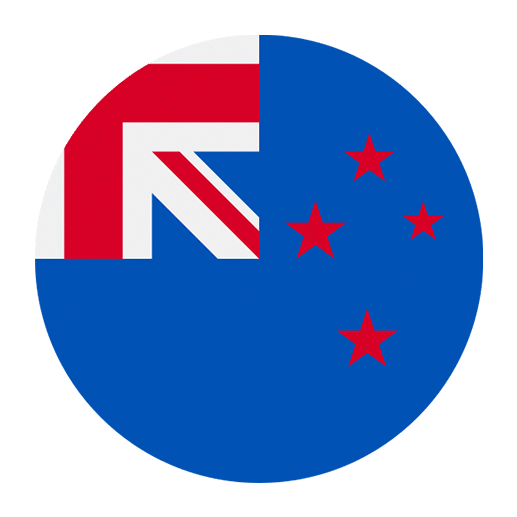Learning a new language can be a challenging yet rewarding experience. It opens up new avenues for communication, cultural understanding, and personal growth. One effective and enjoyable way to immerse oneself in a language is through music. For those interested in learning Māori, the indigenous language of New Zealand, creating a Māori language playlist can be a powerful tool. This article will guide you through the process of creating a playlist that not only entertains but also educates.
Why Music is Effective for Language Learning
Music has long been recognized as a powerful medium for learning languages. It combines rhythm, melody, and repetition, which can help reinforce vocabulary and grammar structures. Here are a few reasons why music is particularly effective for language learning:
1. **Memory Retention**: Music aids memory retention through repetition and melodic patterns. When you hear a song repeatedly, the lyrics and their meanings tend to stick with you.
2. **Pronunciation**: Listening to native speakers sing can help you understand the correct pronunciation and intonation of words and phrases.
3. **Cultural Context**: Music often reflects cultural stories, values, and traditions. This helps learners gain a deeper understanding of the cultural context in which the language is used.
4. **Motivation**: Learning through music can be more engaging and less monotonous than traditional study methods. It keeps the learner motivated and entertained.
Getting Started: Curating Your Playlist
Creating a Māori language playlist involves more than just picking random songs. It requires thoughtful curation to ensure that the music serves educational purposes while being enjoyable. Here’s how you can get started:
Identify Your Goals
Before you start curating your playlist, it’s essential to identify your language learning goals. Are you a beginner looking to grasp basic vocabulary and phrases? Or are you more advanced and looking to refine your pronunciation and understanding of complex grammatical structures? Your goals will determine the type of songs you include in your playlist.
Choose a Variety of Genres
Māori music encompasses various genres, from traditional waiata (songs) to contemporary pop, hip-hop, and reggae. Including a variety of genres in your playlist will expose you to different linguistic styles and cultural expressions. Here are a few genres to consider:
– **Traditional Waiata**: These songs often tell stories of ancestry, mythology, and important historical events. They are rich in cultural context and can provide insight into the Māori worldview.
– **Contemporary Māori Pop**: Modern pop songs in Māori can be more accessible for beginners. They often use simpler language and are catchy, making them easier to remember.
– **Hip-Hop and Rap**: These genres can help with understanding slang, colloquial expressions, and rhythmic patterns in the language.
– **Reggae**: Reggae music, often infused with Māori lyrics, can be uplifting and provide a relaxed learning environment.
Top Māori Artists to Include in Your Playlist
To create an effective Māori language playlist, it’s crucial to include music from prominent Māori artists. Here are a few recommendations:
1. Maisey Rika
Maisey Rika is a renowned Māori singer-songwriter known for her soulful voice and poetic lyrics. Her music often blends traditional Māori elements with contemporary sounds. Songs like “Tangaroa Whakamautai” and “Taku Mana” are great for learners, as they feature clear pronunciation and meaningful lyrics.
2. Stan Walker
Stan Walker, a New Zealand pop singer with Māori heritage, has a significant following. His songs, such as “Aotearoa” and “Tua,” often feature both English and Māori lyrics, making them accessible for beginners while providing an opportunity to practice translation skills.
3. Ria Hall
Ria Hall’s music is a fusion of reggae, soul, and traditional Māori sounds. Her powerful voice and engaging lyrics make her songs ideal for language learners. Tracks like “Te Ahi Kai Pō” and “Tell Me” offer a good mix of vocabulary and cultural themes.
4. Rob Ruha
Rob Ruha is an award-winning Māori singer and composer known for his contributions to the revival of traditional Māori music. His songs often incorporate complex linguistic structures and are excellent for advanced learners. “Kalega” and “Tiki Tapu” are notable tracks to include in your playlist.
5. Alien Weaponry
For those who enjoy heavier music, Alien Weaponry, a thrash metal band, incorporates Māori language and themes into their songs. Tracks like “Kai Tangata” and “Ru Ana Te Whenua” offer a unique way to engage with the language and culture.
Interactive Listening Techniques
Simply listening to music is beneficial, but active engagement will maximize your learning. Here are some interactive listening techniques to incorporate:
1. Lyrics Study
Find the lyrics to the songs in your playlist and study them. Websites like LyricsTranslate and Genius often have translations and annotations. Break down the lyrics line by line, translate them, and try to understand the grammar and vocabulary used.
2. Sing Along
Singing along with the songs can improve your pronunciation and fluency. Don’t worry about getting it perfect; the goal is to get comfortable with the sounds and rhythm of the language.
3. Create Flashcards
As you come across new vocabulary in the songs, create flashcards with the word, its translation, and an example sentence. Use apps like Anki or Quizlet to make digital flashcards that you can review on the go.
4. Discuss the Songs
If possible, discuss the songs with a language partner or tutor. Talk about the meanings, cultural references, and any new vocabulary or grammar points you’ve learned. This will reinforce your understanding and provide an opportunity for practice.
Additional Resources to Complement Your Playlist
While a playlist is a fantastic tool, complementing it with other resources will enhance your learning experience. Here are some additional resources to consider:
Language Learning Apps
Apps like Drops and Clozemaster offer Māori language courses that can help reinforce the vocabulary and phrases you learn through music. They often include interactive exercises and quizzes to test your knowledge.
Online Dictionaries
Having a reliable online dictionary, such as Te Aka Māori Dictionary, can help you look up unfamiliar words and understand their meanings and usage better.
Language Exchange Platforms
Platforms like Tandem and HelloTalk allow you to connect with native Māori speakers for language exchange. Practicing with a native speaker will improve your conversational skills and provide real-time feedback.
Books and Articles
Reading books, articles, and even social media posts in Māori can further reinforce your learning. Start with children’s books or bilingual texts if you’re a beginner, and gradually move on to more complex material.
Challenges and Solutions
Learning a new language through music comes with its own set of challenges. Here are some common challenges and solutions:
Understanding Complex Lyrics
Some songs may have complex lyrics that are difficult to understand. In such cases, start with simpler songs and gradually work your way up. Use online translations and annotations to help you understand the meanings.
Pronunciation Difficulties
Māori pronunciation can be challenging, especially for English speakers. Listening to songs repeatedly and singing along can help. Additionally, use resources like YouTube tutorials to practice pronunciation.
Maintaining Consistency
Consistency is key in language learning. Set aside dedicated time each day to listen to your playlist and engage with the songs actively. Even 15-20 minutes a day can make a significant difference over time.
Conclusion
Creating a Māori language playlist is a fun and effective way to immerse yourself in the language and culture. By carefully curating your playlist, actively engaging with the songs, and complementing your learning with additional resources, you can make significant progress in your language journey. Remember, the goal is not just to learn words and phrases but to connect with the rich cultural heritage that the Māori language represents. So, tune in, sing along, and enjoy the beautiful journey of learning Māori through music.

